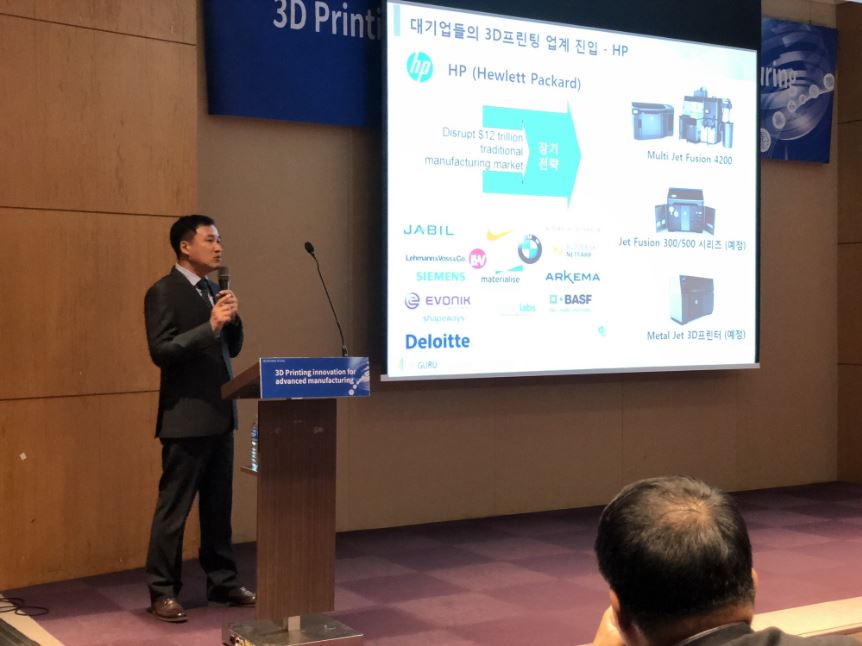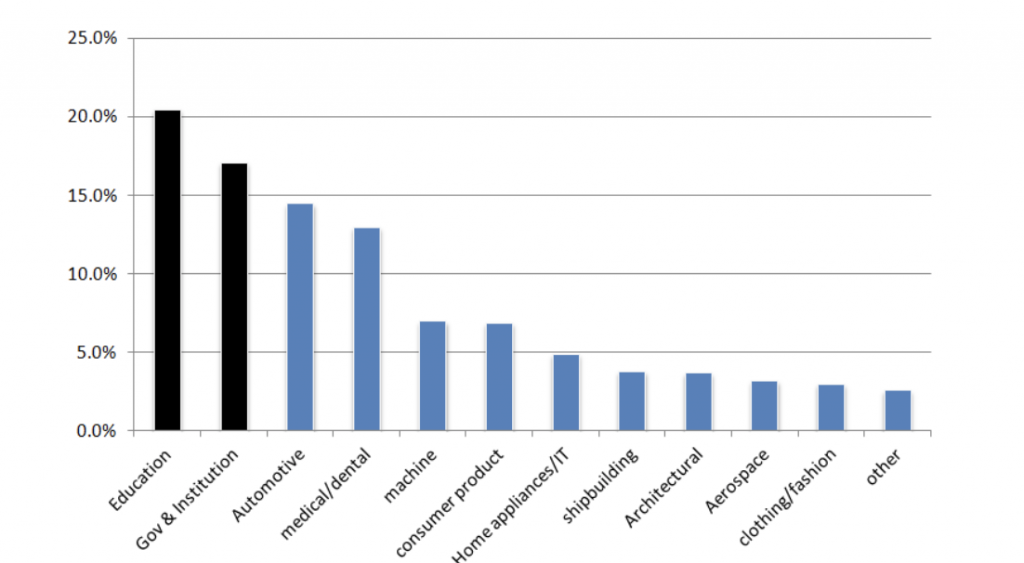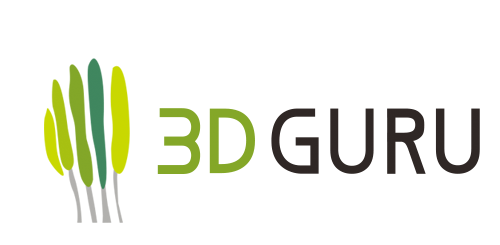We’re all familiar with Terry Wohlers and his eponymous report. What you may not know is that there is also a Korean Terry, Inbo Song. He provides companies with research, analysis, training and consulting in 3D Printing. With deep experience in the Korean market he is guiding companies there towards 3D printing through the highest quality information that he can provide. He’s also the perfect person to guide us into 3D printing trends in Korea and beyond.

What does 3DGURU do?
3DGURU provides 3D printing manufacturers, resellers and end users in South Korea with not only up-to-date information and news of, but also deep insights into, the industry including technology, trends and exhibitions through the website. It also sells select 3D printers and related services including lectures, consulting and training. 3DGURU plans to find and add various contents and profit models to meet the domestic needs. 3D printer industry stakeholders and users in Korea appreciate the insights and expertise of 3DGURU.
Why should I choose to work with your company?
3DGURU is known for a useful source where numerous Korean professionals turn to seeking the latest information on the 3D printing industry. Mainly targeting Korean market, it has been trying to reach to the representatives from various domestic and international businesses or organizations, including manufacturers, resellers, consultants, investors, government institutions and end users. Despite its aiming at the national users, 3DGURU is open to information exchange and collaboration with any 3D printing company abroad which is interested in the Korean market.
What is the 3D printing market in Korea like?
According to the 2018 3D Printing Industry Survey conducted by the Korean National IT Industry Promotion Agency(NIPA), the Korean 3D printing market of the year was about $340M, 16.3% increase from the previous year. It is expected to grow to aboout $870M by 2023, with annual CAGR of 21.5%.
As software coding education became mandatory in 2018, the demand for entry-level 3D printer has increased by 37.2%. Unlike the global trend, products (hardware, material, software) account for 80% of revenue and services for 20%. In 2018, there were 351 3D printing companies, up by 16.2% from the previous year. The fact that 235 (67%) amongst them were start-ups that had been established within last 9 years shows the rapid growth of the industry in Korea.

The education industry used 3D printers most by comparison with other industries, followed by 17.1% of government and institution, 14.5% of automobile, 13% of medical / dental. It is worthy of notice that education and government & institutional sectors accounted for 37.6% of the market, which was significantly higher than the global average, 10 to 15%.
Meanwhile, along with the Korean major manufacturers such as Samsung Electronics, LG Electronics, and Hyundai Motors, many medium and small-sized manufacturers are using 3D printers for prototyping to shorten product production cycles. Still, given the general use of 3D printers and high interest in it, large manufacturing companies tend to be rather conservative in adopting them for production.
As for the bio 3D printing, research institutes and large hospitals are carrying out a variety of experiments and the National Health Insurance Corporation is putting an effort to improve its system so that the market could be expanded.
The 3D printing market in Korea is expected to grow continuously with all the inputs from the business sector as well as government.
Are Korean companies going to expand outside of Korea?
Yes. There are some Korean manufacturers playing the role. Examples include Insstek, a manufacturer of DED process metal 3D printer, which has exported the products to the EU countries and Russia; and Sindoh, another manufacturer, which has sold their goods in U.S. in partnership with Mimaki USA and Stanley Black & Decker. Carima, Hebsiba, and several other companies also have exported 3D printers, mainly to European countries, which account for 22.3%, 4.4% to Southeast Asia, 2.6% to US and 1.8% to Japan.

What is holding back the adoption of 3D printing?
The companies which already have adopted 3D printers say that slow output speed (50%), output size limit (42.7%), low output quality (41.8%), lack of proper post maintenance (33%), lack of diversity of material (31.8%) and insufficient labor supply (22.7%) are the biggest difficulties. Unreliability of 3D printers is also considered as an obstacle. Examples include printing failures and printed objects that are not exactly same as the original designs.
Besides these technical issues, conservative corporate culture of Korean companies might be said to get in the way of expansive adoption of 3D printing.
What kind of companies buy 3D printers in Korea?
Mainly manufacturers, schools, universities and research institutes purchase 3D printers.
What kind of parts are they printing?
It depends on companes and industries. A survey conducted in 2018 reported that 28.1% were for prototype production, 21% for educational research, 20.7% for demonstration models or designs, 8.4% for customized products, 8.1% for tools and accessories. Personally, I see many cases in which prototypes, custom products, and educational applications are printed.
Are companies doing production with 3D printing?
Surveys show that only 4.1% of the entire 3D printer usage is for mass production of finished products. Not all industries are same, but generally speaking, many companies are afraid of jumping in and using 3D printing for production. The representatives of several large Korean manufacturers I’ve talked to in person seem to think that it would be premature to make final products with 3D printers. Still, their continuous interest in 3D printing technology is undeniable.
Although I have seen some small companies making final custom products using 3D printing, large manufacturers tend to be cautious about it.
Some giant manufacturers have been using 3D printers for prototypes, while, unlike the practices of the counterparts in Europe and North America, there seems to be few publized attempts to adopt 3D printers for production.
How is the 3D scanning market evolving?
In 2018, the sales of 3D scanners accounted for 7.7% of total sales of 3D printing related products—3D printers, 3D software, 3D printer materials, and 3D scanners. Meanwhile, most of them, as high as 94.7%, were foreign-made.
In fact, Korean companies are using 3D scanners more and more.
While fixed type 3D scanners with high accuracy and high resolution have been popular, now consumers start to seek for the best options to their own needs. This trend of diversification and segmentation of 3D scanners can be also said to be of the world.
However, as more companies start to use 3D scanners to shorten measurement processes and product production cycles, and accordingly, the demand for affordable goods with proper specifications increases, various types and forms of products are being developed. These are used in various industrial fields, especially in the automobile industry.
Furthermore, 3D scanners are getting to be used as input tools for producing videos, such as movies, games, and VRs beyond the conventional usage for reverse engineering and quality inspection.
All in all, 3D scanning market in Korea is in early stage where analog information is being digitized.
Subscribe to Our Email Newsletter
Stay up-to-date on all the latest news from the 3D printing industry and receive information and offers from third party vendors.
Print Services
Upload your 3D Models and get them printed quickly and efficiently.
You May Also Like
Nikon SLM Solutions Sells SLM 500 to Primary Weapon Systems to Expand Suppressor Production
Primary Weapons Systems (PWS) is a Boise, Idaho-based manufacturer of suppressors, firearms, and related components. A subsidiary of Vigilant Gear and a sister company to aftermarket Glock slide manufacturer Lone...
3DPOD 261: Tooling and Cooling for AM with Jason Murphy, NXC MFG
Jason Murphy´s NXC MFG (Next Chapter Manufacturing) is not a generalist service; instead, the company specializes in making tooling. Using LPBF and binder jet, the company produces some of the...
HP and Firestorm Labs Form Partnership to Use Multi Jet Fusion 3D Printers in Deployable Factories
HP Inc., maker of a range of additive manufacturing (AM) solutions including the Multi Jet Fusion (MJF) ecosystem, has announced a partnership with Firestorm Labs, a developer of containerized, deployable...
3D Printing News Briefs, July 2, 2025: Copper Alloys, Defense Manufacturing, & More
We’re starting off with metals in today’s 3D Printing News Briefs, as Farsoon has unveiled a large-scale AM solution for copper alloys, and Meltio used its wire-laser metal solution to...
































